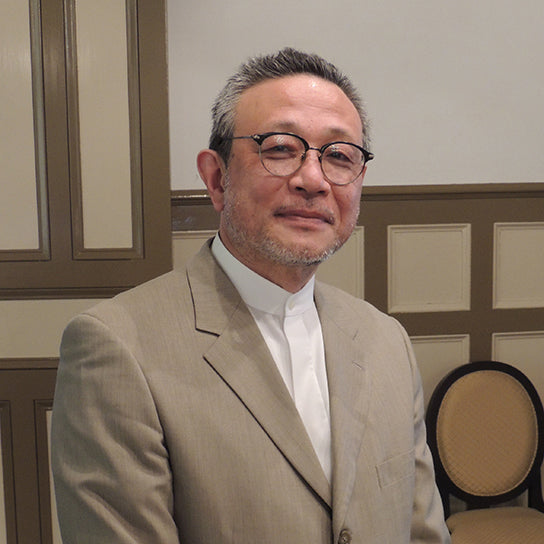This piece is a fusion of tradition and modernity, reflecting the style of his teacher, Nakazato Shigetoshi. The title of the piece, "Tataki," comes from the traditional technique of "himozukuri," which has been passed down in Karatsu since the Momoyama period. This technique involves piling up clay in a string-like shape and then shaping it by hitting the outside with a battledore-shaped board while pressing stones from the inside. Without using a potter's wheel, soft, natural curves are created, and the texture, which deliberately leaves traces of the board hitting, is the unique charm of this technique.
The handle design, which is rare for Karatsu ware, also exudes an exotic atmosphere reminiscent of Persian pottery, another point where the influence of Nakazato Shigetoshi can be clearly felt. While the color is subdued, the delicate expression resulting from the kiln change process is felt even more richly in person, and the piece has a profound depth within its calm appearance.
Its large size and presence make it an artistic piece that blends in well with any alcove or modern space. When using it as a vase, instead of pouring water directly into it, you can use a bamboo tube or plastic bottle as a "dropper" to achieve both aesthetic appeal and practicality.
Size: Diameter 32.5cm
Height 23.2cm
Box: Same box
[Ceramic history]
Born in Karatsu City in 1958
1976 Graduated from Karatsu Higashi High School
1978 Trained at a Karatsu pottery studio
1989: Built kiln at current location
1998 Solo exhibition at Chiba Mitsukoshi
1999: Learned the technique of pâte de verre at Notojima Glass Studio in Ishikawa Prefecture
2006 Solo exhibition at Saga Tamaya
2008 Solo exhibition at Nomura Museum of Art, Kyoto
2014 Solo exhibition at GALLERY Ichibankan, Fukuoka














